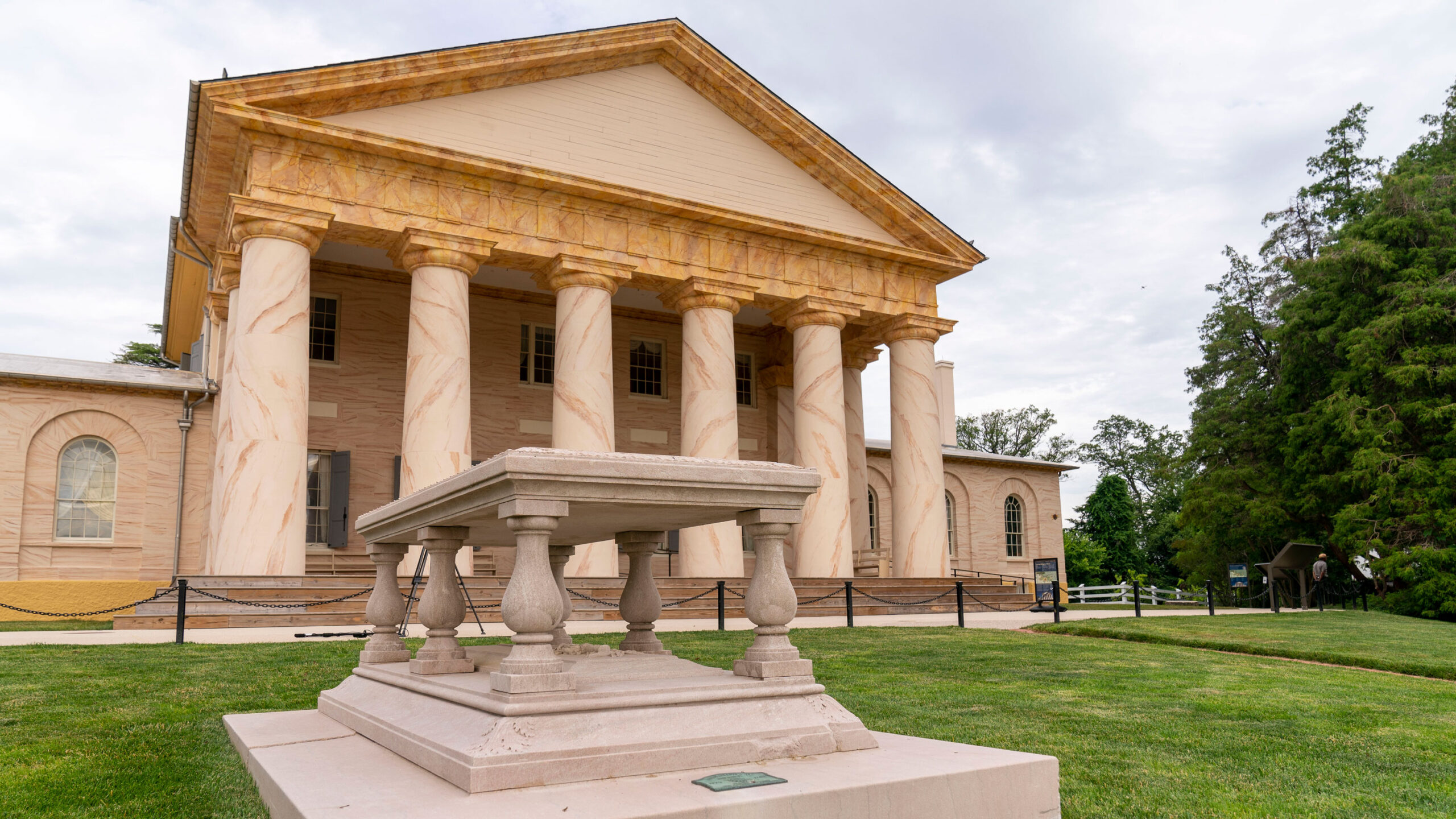The Virginia plantation house where Gen. Robert E. Lee lived before he abandoned it to lead the Confederate army during the Civil War has reopened after a multimillion-dollar renovation that focuses new attention on the enslaved people who lived and labored there.
Arlington House, The Robert E. Lee Memorial, was built by enslaved people and indentured workers between 1802 and 1818, and more than 100 African Americans were enslaved there in the decades leading up to the war, according to the National Park Service.
The park service worked with the descendants of several enslaved families to tell a more complete history of the home, the statement said. The Greek Revival mansion overlooks the Potomac River and Washington, DC.
Renovations on the estate began in 2018. The project was funded by a $12.35 million donation by philanthropist David M. Rubenstein to the National Park Foundation, according to a news release from the park service.
“Our goal is to create a place of dialogue and learning. We invite visitors to be curious, to connect with the stories, and to be open to hard questions. Park rangers and volunteers will share inclusive stories about the many people and events connected to Arlington House,” said Charles Cuvelier in the release. Cuvelier is the George Washington Memorial Parkway superintendent and oversaw the renovation for the park service.
The project, which was originally scheduled to be completed in 2019, restored and modernized the house and the enslaved people’s living quarters. The grounds and kitchen garden were redesigned to improve accessibility, according to the park service.
“The National Park Service has done a spectacular job refurbishing Arlington House and telling the stories of the enslaved people who built the plantation house and worked there,” Rubenstein said in the release. “I hope many people get to visit and believe that Arlington House’s rich and complicated history will add to the necessary and important discussion in our country about racial justice.”
The reopening comes as cities around the United States are wrestling with what to do with statues and memorials to Lee and other Confederate leaders, as well as buildings named in their honor.
The Charlottesville City Council in Virginia voted unanimously on Monday to remove statues of Lee and Gen. Thomas “Stonewall” Jackson from the city’s public parks. The vote comes almost four years after the violent “Unite the Right” rally in Charlottesville that killed counterprotester Heather Heyer.
The Southern Poverty Law Center reported that 168 Confederate symbols were renamed or removed from public spaces in 2020.
The house was built as a residence for George Washington Parke Custis and was intended to be a memorial to his adopted grandfather George Washington.
Custis’ daughter, Mary Anna Randolph Custis, married Lee at the house in 1831. They inherited the house shortly before the Civil War, but Lee left the house on April 22, 1861, and never returned.
The Union Army seized the plantation during the war. In 1864, the US government confiscated the property after Lee’s wife, Mary, was unable to pay the taxes on it. After the war, Lee’s oldest son, George Washington Custis Lee, sued the US government and in 1882, the US Supreme Court declared the government had illegally confiscated the property and it was returned.
Custis Lee then sold the house and 1,100-acre estate back to the government for $150,000, or approximately $4 million in 2021 dollars.
During the war, its grounds were used for a military cemetery in “an effort to ensure that the Lee family would be unable to return to the house,” according to the park service. That cemetery became Arlington National Cemetery.
Freed slave James Parks was living on the Arlington House estate when it was converted to the cemetery and became one of its first gravediggers. Born in 1843 and died in 1925, Parks is the only person buried in Arlington National Cemetery who was born on the property, according to the cemetery’s website.
Before it closed for renovation, more than 650,000 people visited Arlington House each year, the park service said.



